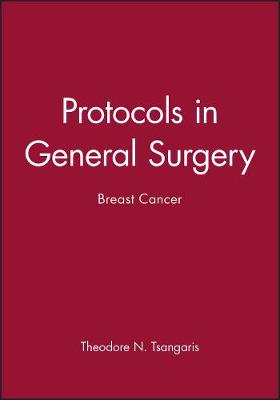Functional Biochemistry in Health and Disease
 -15%
portes grátis
-15%
portes grátis
Functional Biochemistry in Health and Disease
Newsholme, Eric; Leech, Anthony
John Wiley & Sons Inc
04/2010
560
Dura
Inglês
9780471988205
15 a 20 dias
1602
Descrição não disponível.
Abbreviations.
I INTRODUCTION.
1 The Structural and Biochemical Hierarchy of a Cell and a Human.
Cell structure.
Tissues.
The whole human.
The biochemical hierarchy.
II ESSENTIAL TOPICS IN DYNAMIC BIOCHEMISTRY.
2 Energy: In the Body, Tissues and Biochemical Processes.
Energy transformations in the whole body.
Energy transformations in tissues and organs.
Energy transformation in biochemical reactions and pathways.
Adenosine triphosphate: its role in the cell.
3 Enzymes: Activities, Properties, Regulation and Physiology.
Nomenclature and classifi cation.
Basic facts.
Mechanisms by which an enzyme enhances the rate of a reaction.
Cofactors and prosthetic groups.
Factors that change the activity of an enzyme.
Allosteric inhibition.
The physiological signifi cance of Km and Vmax values.
Enzymes as tools.
Enzymes in diagnosis.
Enzymes as therapeutic agents.
Enzymes as targets for therapy.
Kinetic structure of a biochemical pathway.
Regulation of enzyme activity.
4 Transport into the Body: The Gastrointestinal Tract, Digestion and Absorption.
Gross structure of the gastrointestinal tract.
Biochemistry of cooking and food preparation.
Digestion and absorption.
The gastrointestinal tract and disease.
5 Transport into the Cell: Particles, Molecules and Ions.
Structure of the plasma membrane.
Diffusion through membranes.
Active transport.
Endocytosis and exocytosis.
Physiological importance of some transport systems.
III ESSENTIAL METABOLISM.
6 Carbohydrate Metabolism.
Glycolysis.
The biochemical and physiological importance of anaerobic glycolysis.
Regulation of the flux through glycolysis.
Glycogen synthesis.
Synthesis of Fructose and lactose.
The pentose phosphate pathway.
Gluconeogenesis: glucose formation from non-carbohydrate sources.
Role of the liver in the regulation of the blood glucose concentration.
Hormones and control of gluconeogenesis.
Regulation of glycolysis and gluconeogenesis by ATP/ADP concentration ratio in the liver.
Hypoglycaemia.
Hyperglycaemia.
7 Fat Metabolism.
Fats in nutrition.
Fat fuels.
Physiological importance of fat fuels.
Limitations or drawbacks of fats as a fuel.
Genetic defects in fatty acid oxidation.
Pathological concentrations of fat fuels.
8 Amino Acid and Protein Metabolism.
Introduction.
Sources of amino acids.
Protein and amino acid requirements.
Fate of amino acids.
Central role of transdeamination.
Amino acid metabolism in different tissues.
Glutamine: an amino acid of central importance.
Urea 'salvage'.
9 Oxidation of Fuels and ATP Generation: Physiological and Clinical Importance.
The Krebs cycle.
The electron transfer chain.
Oxidative phosphorylation.
Coupling of electron transfer with oxidative phosphorylation.
Transport into and out of mitochondria.
'Energy' transport in the cytosol: the creatine/phosphocreatine shuttle.
Regulation of fl uxes.
The physiological importance of mitochondrial ATP generation.
The effect of ageing on ATP generation.
10 Metabolism of Ammonia and Nucleic Acids.
Roles of ammonia.
Urea synthesis.
Degradation of nucleic acids, nucleotides, nucleosides and bases: the generation of ammonia.
Ammonia toxicity.
Defi ciencies of urea cycle enzymes.
11 Synthesis of Fatty Acids, Triacylglycerol, Phospholipids and Fatty Messengers: The Roles of Polyunsaturated Fatty Acids.
Synthesis of long-chain fatty acids.
Unsaturated fatty acids.
Essential fatty acids.
Phospholipids.
Fatty messenger molecules.
Fatty acids in neurological and behavioural disorders.
12 Hormones: From Action in the Cell to Function in the Body.
Endocrine hormones: traditional and novel.
The action, effects and functions of a hormone.
Action of hormones.
The biochemical and physiological effects of a hormone.
Pheromones.
Kinetic principles that apply to hormone action.
IV ESSENTIAL PROCESSES OF LIFE.
13 Physical Activity: In Non-Athletes, Athletes and Patients.
The mechanical basis of movement by skeletal muscle.
Structure of muscle.
Proteins involved in muscle action.
Mechanism of contraction: the cross-bridge cycle.
Regulation of contraction.
Fuels for muscle.
Fuels for various athletic events and games.
Fatigue.
Fatigue in patients.
Physical training.
Development of muscle.
Health benefi ts of physical activity.
Health hazards of physical activity.
Skeletal muscle diseases.
14 Mental Activity and Mental Illness.
Mental activity.
Cells in the brain.
Electrical communication.
Chemical communication.
Fuels and energy metabolism in the brain.
Mental illnesses: biochemical causes.
Recreational drugs.
15 Nutrition: Biochemistry, Physiology and Pathology.
Basic information required for discussion of some biochemical aspects of nutrition.
Vitamins.
Minerals.
A healthy diet.
Nutrition for specifi c activities or conditions.
Overnutrition.
Malnutrition.
Functional foods and nutraceuticals.
Nutrition for patients with genetic disorders.
Vegetarian diets.
Eating disorders.
16 Starvation: Metabolic Changes, Survival and Death.
Mechanisms for the regulation of the blood glucose concentration.
Metabolic responses to starvation.
Sequence of metabolic changes from intermediate starvation to death.
Progressive decrease in protein degradation in starvation.
17 Defence Against Pathogens: Barriers, Enzymes and the Immune System.
When the physical barrier is breached.
The immune system.
Adaptive immunity.
Cytokines.
Mechanisms for killing pathogens.
Killing of intracellular bacteria and large parasites in the extracellular fluid.
Allergy.
Fuels and generation of ATP in immune cells: consequences for a patient.
Essential fatty acids and proliferation.
The lymph nodes.
Tolerance.
Chronic infl ammation and autoimmunity.
Immunosuppressive agents.
Conditions that reduce the effectiveness of the immune system.
Factors that increase the effectiveness of the immune system.
Return of the 'old' infectious diseases.
New infectious diseases.
Defence in the intestine.
18 Survival after Trauma: Metabolic Changes and Response of the Immune System.
Physiological and metabolie responses the ebb & fl ow phases.
Nutrition.
Mobilisation of triacylglycerol and protein in trauma.
Metabolic changes in trauma and in starvation.
Fever.
Summary of the effects of trauma on the immune system and the whole body.
19 Sexual Reproduction.
Male reproductive system.
Female reproductive system.
The menstrual cycle.
Ovulation.
Chemical communication in male and female reproduction.
Coitus and the sexual response in the male and female.
Fertilisation.
Pregnancy.
Parturition.
Contraception.
The menopause.
Sexually transmitted diseases.
20 Growth and Death of Cells and Humans: The Cell Cycle, Apoptosis and Necrosis.
Introduction to cell proliferation.
The cell cycle.
Death.
V SERIOUS DISEASES.
21 Cancer: Genes, Cachexia and Death.
Basic information.
Oncogenes and proto-oncogenes.
Proteins expressed by oncogenes.
Processes by which proto-oncogenes can be activated or converted to oncogenes.
Tumour suppressor genes.
Telomeres and telomerase in tumour cells.
Metastasis.
Metabolic changes in cancer patients.
Overview of cancer.
Cancer-causing agents or conditions.
Chemotherapy.
Radiotherapy.
22 Atherosclerosis, Hypertension and Heart Attack.
Atherosclerosis.
Hypertension.
Heart attack (myocardial infarction).
Index.
I INTRODUCTION.
1 The Structural and Biochemical Hierarchy of a Cell and a Human.
Cell structure.
Tissues.
The whole human.
The biochemical hierarchy.
II ESSENTIAL TOPICS IN DYNAMIC BIOCHEMISTRY.
2 Energy: In the Body, Tissues and Biochemical Processes.
Energy transformations in the whole body.
Energy transformations in tissues and organs.
Energy transformation in biochemical reactions and pathways.
Adenosine triphosphate: its role in the cell.
3 Enzymes: Activities, Properties, Regulation and Physiology.
Nomenclature and classifi cation.
Basic facts.
Mechanisms by which an enzyme enhances the rate of a reaction.
Cofactors and prosthetic groups.
Factors that change the activity of an enzyme.
Allosteric inhibition.
The physiological signifi cance of Km and Vmax values.
Enzymes as tools.
Enzymes in diagnosis.
Enzymes as therapeutic agents.
Enzymes as targets for therapy.
Kinetic structure of a biochemical pathway.
Regulation of enzyme activity.
4 Transport into the Body: The Gastrointestinal Tract, Digestion and Absorption.
Gross structure of the gastrointestinal tract.
Biochemistry of cooking and food preparation.
Digestion and absorption.
The gastrointestinal tract and disease.
5 Transport into the Cell: Particles, Molecules and Ions.
Structure of the plasma membrane.
Diffusion through membranes.
Active transport.
Endocytosis and exocytosis.
Physiological importance of some transport systems.
III ESSENTIAL METABOLISM.
6 Carbohydrate Metabolism.
Glycolysis.
The biochemical and physiological importance of anaerobic glycolysis.
Regulation of the flux through glycolysis.
Glycogen synthesis.
Synthesis of Fructose and lactose.
The pentose phosphate pathway.
Gluconeogenesis: glucose formation from non-carbohydrate sources.
Role of the liver in the regulation of the blood glucose concentration.
Hormones and control of gluconeogenesis.
Regulation of glycolysis and gluconeogenesis by ATP/ADP concentration ratio in the liver.
Hypoglycaemia.
Hyperglycaemia.
7 Fat Metabolism.
Fats in nutrition.
Fat fuels.
Physiological importance of fat fuels.
Limitations or drawbacks of fats as a fuel.
Genetic defects in fatty acid oxidation.
Pathological concentrations of fat fuels.
8 Amino Acid and Protein Metabolism.
Introduction.
Sources of amino acids.
Protein and amino acid requirements.
Fate of amino acids.
Central role of transdeamination.
Amino acid metabolism in different tissues.
Glutamine: an amino acid of central importance.
Urea 'salvage'.
9 Oxidation of Fuels and ATP Generation: Physiological and Clinical Importance.
The Krebs cycle.
The electron transfer chain.
Oxidative phosphorylation.
Coupling of electron transfer with oxidative phosphorylation.
Transport into and out of mitochondria.
'Energy' transport in the cytosol: the creatine/phosphocreatine shuttle.
Regulation of fl uxes.
The physiological importance of mitochondrial ATP generation.
The effect of ageing on ATP generation.
10 Metabolism of Ammonia and Nucleic Acids.
Roles of ammonia.
Urea synthesis.
Degradation of nucleic acids, nucleotides, nucleosides and bases: the generation of ammonia.
Ammonia toxicity.
Defi ciencies of urea cycle enzymes.
11 Synthesis of Fatty Acids, Triacylglycerol, Phospholipids and Fatty Messengers: The Roles of Polyunsaturated Fatty Acids.
Synthesis of long-chain fatty acids.
Unsaturated fatty acids.
Essential fatty acids.
Phospholipids.
Fatty messenger molecules.
Fatty acids in neurological and behavioural disorders.
12 Hormones: From Action in the Cell to Function in the Body.
Endocrine hormones: traditional and novel.
The action, effects and functions of a hormone.
Action of hormones.
The biochemical and physiological effects of a hormone.
Pheromones.
Kinetic principles that apply to hormone action.
IV ESSENTIAL PROCESSES OF LIFE.
13 Physical Activity: In Non-Athletes, Athletes and Patients.
The mechanical basis of movement by skeletal muscle.
Structure of muscle.
Proteins involved in muscle action.
Mechanism of contraction: the cross-bridge cycle.
Regulation of contraction.
Fuels for muscle.
Fuels for various athletic events and games.
Fatigue.
Fatigue in patients.
Physical training.
Development of muscle.
Health benefi ts of physical activity.
Health hazards of physical activity.
Skeletal muscle diseases.
14 Mental Activity and Mental Illness.
Mental activity.
Cells in the brain.
Electrical communication.
Chemical communication.
Fuels and energy metabolism in the brain.
Mental illnesses: biochemical causes.
Recreational drugs.
15 Nutrition: Biochemistry, Physiology and Pathology.
Basic information required for discussion of some biochemical aspects of nutrition.
Vitamins.
Minerals.
A healthy diet.
Nutrition for specifi c activities or conditions.
Overnutrition.
Malnutrition.
Functional foods and nutraceuticals.
Nutrition for patients with genetic disorders.
Vegetarian diets.
Eating disorders.
16 Starvation: Metabolic Changes, Survival and Death.
Mechanisms for the regulation of the blood glucose concentration.
Metabolic responses to starvation.
Sequence of metabolic changes from intermediate starvation to death.
Progressive decrease in protein degradation in starvation.
17 Defence Against Pathogens: Barriers, Enzymes and the Immune System.
When the physical barrier is breached.
The immune system.
Adaptive immunity.
Cytokines.
Mechanisms for killing pathogens.
Killing of intracellular bacteria and large parasites in the extracellular fluid.
Allergy.
Fuels and generation of ATP in immune cells: consequences for a patient.
Essential fatty acids and proliferation.
The lymph nodes.
Tolerance.
Chronic infl ammation and autoimmunity.
Immunosuppressive agents.
Conditions that reduce the effectiveness of the immune system.
Factors that increase the effectiveness of the immune system.
Return of the 'old' infectious diseases.
New infectious diseases.
Defence in the intestine.
18 Survival after Trauma: Metabolic Changes and Response of the Immune System.
Physiological and metabolie responses the ebb & fl ow phases.
Nutrition.
Mobilisation of triacylglycerol and protein in trauma.
Metabolic changes in trauma and in starvation.
Fever.
Summary of the effects of trauma on the immune system and the whole body.
19 Sexual Reproduction.
Male reproductive system.
Female reproductive system.
The menstrual cycle.
Ovulation.
Chemical communication in male and female reproduction.
Coitus and the sexual response in the male and female.
Fertilisation.
Pregnancy.
Parturition.
Contraception.
The menopause.
Sexually transmitted diseases.
20 Growth and Death of Cells and Humans: The Cell Cycle, Apoptosis and Necrosis.
Introduction to cell proliferation.
The cell cycle.
Death.
V SERIOUS DISEASES.
21 Cancer: Genes, Cachexia and Death.
Basic information.
Oncogenes and proto-oncogenes.
Proteins expressed by oncogenes.
Processes by which proto-oncogenes can be activated or converted to oncogenes.
Tumour suppressor genes.
Telomeres and telomerase in tumour cells.
Metastasis.
Metabolic changes in cancer patients.
Overview of cancer.
Cancer-causing agents or conditions.
Chemotherapy.
Radiotherapy.
22 Atherosclerosis, Hypertension and Heart Attack.
Atherosclerosis.
Hypertension.
Heart attack (myocardial infarction).
Index.
Este título pertence ao(s) assunto(s) indicados(s). Para ver outros títulos clique no assunto desejado.
biochemistry; account; functional; health; necessary; aspects; application; dynamic; body; functions; basic; book; practice; gap; medical; sections; one; medical subject; isolation; crosssectional links; subject
Abbreviations.
I INTRODUCTION.
1 The Structural and Biochemical Hierarchy of a Cell and a Human.
Cell structure.
Tissues.
The whole human.
The biochemical hierarchy.
II ESSENTIAL TOPICS IN DYNAMIC BIOCHEMISTRY.
2 Energy: In the Body, Tissues and Biochemical Processes.
Energy transformations in the whole body.
Energy transformations in tissues and organs.
Energy transformation in biochemical reactions and pathways.
Adenosine triphosphate: its role in the cell.
3 Enzymes: Activities, Properties, Regulation and Physiology.
Nomenclature and classifi cation.
Basic facts.
Mechanisms by which an enzyme enhances the rate of a reaction.
Cofactors and prosthetic groups.
Factors that change the activity of an enzyme.
Allosteric inhibition.
The physiological signifi cance of Km and Vmax values.
Enzymes as tools.
Enzymes in diagnosis.
Enzymes as therapeutic agents.
Enzymes as targets for therapy.
Kinetic structure of a biochemical pathway.
Regulation of enzyme activity.
4 Transport into the Body: The Gastrointestinal Tract, Digestion and Absorption.
Gross structure of the gastrointestinal tract.
Biochemistry of cooking and food preparation.
Digestion and absorption.
The gastrointestinal tract and disease.
5 Transport into the Cell: Particles, Molecules and Ions.
Structure of the plasma membrane.
Diffusion through membranes.
Active transport.
Endocytosis and exocytosis.
Physiological importance of some transport systems.
III ESSENTIAL METABOLISM.
6 Carbohydrate Metabolism.
Glycolysis.
The biochemical and physiological importance of anaerobic glycolysis.
Regulation of the flux through glycolysis.
Glycogen synthesis.
Synthesis of Fructose and lactose.
The pentose phosphate pathway.
Gluconeogenesis: glucose formation from non-carbohydrate sources.
Role of the liver in the regulation of the blood glucose concentration.
Hormones and control of gluconeogenesis.
Regulation of glycolysis and gluconeogenesis by ATP/ADP concentration ratio in the liver.
Hypoglycaemia.
Hyperglycaemia.
7 Fat Metabolism.
Fats in nutrition.
Fat fuels.
Physiological importance of fat fuels.
Limitations or drawbacks of fats as a fuel.
Genetic defects in fatty acid oxidation.
Pathological concentrations of fat fuels.
8 Amino Acid and Protein Metabolism.
Introduction.
Sources of amino acids.
Protein and amino acid requirements.
Fate of amino acids.
Central role of transdeamination.
Amino acid metabolism in different tissues.
Glutamine: an amino acid of central importance.
Urea 'salvage'.
9 Oxidation of Fuels and ATP Generation: Physiological and Clinical Importance.
The Krebs cycle.
The electron transfer chain.
Oxidative phosphorylation.
Coupling of electron transfer with oxidative phosphorylation.
Transport into and out of mitochondria.
'Energy' transport in the cytosol: the creatine/phosphocreatine shuttle.
Regulation of fl uxes.
The physiological importance of mitochondrial ATP generation.
The effect of ageing on ATP generation.
10 Metabolism of Ammonia and Nucleic Acids.
Roles of ammonia.
Urea synthesis.
Degradation of nucleic acids, nucleotides, nucleosides and bases: the generation of ammonia.
Ammonia toxicity.
Defi ciencies of urea cycle enzymes.
11 Synthesis of Fatty Acids, Triacylglycerol, Phospholipids and Fatty Messengers: The Roles of Polyunsaturated Fatty Acids.
Synthesis of long-chain fatty acids.
Unsaturated fatty acids.
Essential fatty acids.
Phospholipids.
Fatty messenger molecules.
Fatty acids in neurological and behavioural disorders.
12 Hormones: From Action in the Cell to Function in the Body.
Endocrine hormones: traditional and novel.
The action, effects and functions of a hormone.
Action of hormones.
The biochemical and physiological effects of a hormone.
Pheromones.
Kinetic principles that apply to hormone action.
IV ESSENTIAL PROCESSES OF LIFE.
13 Physical Activity: In Non-Athletes, Athletes and Patients.
The mechanical basis of movement by skeletal muscle.
Structure of muscle.
Proteins involved in muscle action.
Mechanism of contraction: the cross-bridge cycle.
Regulation of contraction.
Fuels for muscle.
Fuels for various athletic events and games.
Fatigue.
Fatigue in patients.
Physical training.
Development of muscle.
Health benefi ts of physical activity.
Health hazards of physical activity.
Skeletal muscle diseases.
14 Mental Activity and Mental Illness.
Mental activity.
Cells in the brain.
Electrical communication.
Chemical communication.
Fuels and energy metabolism in the brain.
Mental illnesses: biochemical causes.
Recreational drugs.
15 Nutrition: Biochemistry, Physiology and Pathology.
Basic information required for discussion of some biochemical aspects of nutrition.
Vitamins.
Minerals.
A healthy diet.
Nutrition for specifi c activities or conditions.
Overnutrition.
Malnutrition.
Functional foods and nutraceuticals.
Nutrition for patients with genetic disorders.
Vegetarian diets.
Eating disorders.
16 Starvation: Metabolic Changes, Survival and Death.
Mechanisms for the regulation of the blood glucose concentration.
Metabolic responses to starvation.
Sequence of metabolic changes from intermediate starvation to death.
Progressive decrease in protein degradation in starvation.
17 Defence Against Pathogens: Barriers, Enzymes and the Immune System.
When the physical barrier is breached.
The immune system.
Adaptive immunity.
Cytokines.
Mechanisms for killing pathogens.
Killing of intracellular bacteria and large parasites in the extracellular fluid.
Allergy.
Fuels and generation of ATP in immune cells: consequences for a patient.
Essential fatty acids and proliferation.
The lymph nodes.
Tolerance.
Chronic infl ammation and autoimmunity.
Immunosuppressive agents.
Conditions that reduce the effectiveness of the immune system.
Factors that increase the effectiveness of the immune system.
Return of the 'old' infectious diseases.
New infectious diseases.
Defence in the intestine.
18 Survival after Trauma: Metabolic Changes and Response of the Immune System.
Physiological and metabolie responses the ebb & fl ow phases.
Nutrition.
Mobilisation of triacylglycerol and protein in trauma.
Metabolic changes in trauma and in starvation.
Fever.
Summary of the effects of trauma on the immune system and the whole body.
19 Sexual Reproduction.
Male reproductive system.
Female reproductive system.
The menstrual cycle.
Ovulation.
Chemical communication in male and female reproduction.
Coitus and the sexual response in the male and female.
Fertilisation.
Pregnancy.
Parturition.
Contraception.
The menopause.
Sexually transmitted diseases.
20 Growth and Death of Cells and Humans: The Cell Cycle, Apoptosis and Necrosis.
Introduction to cell proliferation.
The cell cycle.
Death.
V SERIOUS DISEASES.
21 Cancer: Genes, Cachexia and Death.
Basic information.
Oncogenes and proto-oncogenes.
Proteins expressed by oncogenes.
Processes by which proto-oncogenes can be activated or converted to oncogenes.
Tumour suppressor genes.
Telomeres and telomerase in tumour cells.
Metastasis.
Metabolic changes in cancer patients.
Overview of cancer.
Cancer-causing agents or conditions.
Chemotherapy.
Radiotherapy.
22 Atherosclerosis, Hypertension and Heart Attack.
Atherosclerosis.
Hypertension.
Heart attack (myocardial infarction).
Index.
I INTRODUCTION.
1 The Structural and Biochemical Hierarchy of a Cell and a Human.
Cell structure.
Tissues.
The whole human.
The biochemical hierarchy.
II ESSENTIAL TOPICS IN DYNAMIC BIOCHEMISTRY.
2 Energy: In the Body, Tissues and Biochemical Processes.
Energy transformations in the whole body.
Energy transformations in tissues and organs.
Energy transformation in biochemical reactions and pathways.
Adenosine triphosphate: its role in the cell.
3 Enzymes: Activities, Properties, Regulation and Physiology.
Nomenclature and classifi cation.
Basic facts.
Mechanisms by which an enzyme enhances the rate of a reaction.
Cofactors and prosthetic groups.
Factors that change the activity of an enzyme.
Allosteric inhibition.
The physiological signifi cance of Km and Vmax values.
Enzymes as tools.
Enzymes in diagnosis.
Enzymes as therapeutic agents.
Enzymes as targets for therapy.
Kinetic structure of a biochemical pathway.
Regulation of enzyme activity.
4 Transport into the Body: The Gastrointestinal Tract, Digestion and Absorption.
Gross structure of the gastrointestinal tract.
Biochemistry of cooking and food preparation.
Digestion and absorption.
The gastrointestinal tract and disease.
5 Transport into the Cell: Particles, Molecules and Ions.
Structure of the plasma membrane.
Diffusion through membranes.
Active transport.
Endocytosis and exocytosis.
Physiological importance of some transport systems.
III ESSENTIAL METABOLISM.
6 Carbohydrate Metabolism.
Glycolysis.
The biochemical and physiological importance of anaerobic glycolysis.
Regulation of the flux through glycolysis.
Glycogen synthesis.
Synthesis of Fructose and lactose.
The pentose phosphate pathway.
Gluconeogenesis: glucose formation from non-carbohydrate sources.
Role of the liver in the regulation of the blood glucose concentration.
Hormones and control of gluconeogenesis.
Regulation of glycolysis and gluconeogenesis by ATP/ADP concentration ratio in the liver.
Hypoglycaemia.
Hyperglycaemia.
7 Fat Metabolism.
Fats in nutrition.
Fat fuels.
Physiological importance of fat fuels.
Limitations or drawbacks of fats as a fuel.
Genetic defects in fatty acid oxidation.
Pathological concentrations of fat fuels.
8 Amino Acid and Protein Metabolism.
Introduction.
Sources of amino acids.
Protein and amino acid requirements.
Fate of amino acids.
Central role of transdeamination.
Amino acid metabolism in different tissues.
Glutamine: an amino acid of central importance.
Urea 'salvage'.
9 Oxidation of Fuels and ATP Generation: Physiological and Clinical Importance.
The Krebs cycle.
The electron transfer chain.
Oxidative phosphorylation.
Coupling of electron transfer with oxidative phosphorylation.
Transport into and out of mitochondria.
'Energy' transport in the cytosol: the creatine/phosphocreatine shuttle.
Regulation of fl uxes.
The physiological importance of mitochondrial ATP generation.
The effect of ageing on ATP generation.
10 Metabolism of Ammonia and Nucleic Acids.
Roles of ammonia.
Urea synthesis.
Degradation of nucleic acids, nucleotides, nucleosides and bases: the generation of ammonia.
Ammonia toxicity.
Defi ciencies of urea cycle enzymes.
11 Synthesis of Fatty Acids, Triacylglycerol, Phospholipids and Fatty Messengers: The Roles of Polyunsaturated Fatty Acids.
Synthesis of long-chain fatty acids.
Unsaturated fatty acids.
Essential fatty acids.
Phospholipids.
Fatty messenger molecules.
Fatty acids in neurological and behavioural disorders.
12 Hormones: From Action in the Cell to Function in the Body.
Endocrine hormones: traditional and novel.
The action, effects and functions of a hormone.
Action of hormones.
The biochemical and physiological effects of a hormone.
Pheromones.
Kinetic principles that apply to hormone action.
IV ESSENTIAL PROCESSES OF LIFE.
13 Physical Activity: In Non-Athletes, Athletes and Patients.
The mechanical basis of movement by skeletal muscle.
Structure of muscle.
Proteins involved in muscle action.
Mechanism of contraction: the cross-bridge cycle.
Regulation of contraction.
Fuels for muscle.
Fuels for various athletic events and games.
Fatigue.
Fatigue in patients.
Physical training.
Development of muscle.
Health benefi ts of physical activity.
Health hazards of physical activity.
Skeletal muscle diseases.
14 Mental Activity and Mental Illness.
Mental activity.
Cells in the brain.
Electrical communication.
Chemical communication.
Fuels and energy metabolism in the brain.
Mental illnesses: biochemical causes.
Recreational drugs.
15 Nutrition: Biochemistry, Physiology and Pathology.
Basic information required for discussion of some biochemical aspects of nutrition.
Vitamins.
Minerals.
A healthy diet.
Nutrition for specifi c activities or conditions.
Overnutrition.
Malnutrition.
Functional foods and nutraceuticals.
Nutrition for patients with genetic disorders.
Vegetarian diets.
Eating disorders.
16 Starvation: Metabolic Changes, Survival and Death.
Mechanisms for the regulation of the blood glucose concentration.
Metabolic responses to starvation.
Sequence of metabolic changes from intermediate starvation to death.
Progressive decrease in protein degradation in starvation.
17 Defence Against Pathogens: Barriers, Enzymes and the Immune System.
When the physical barrier is breached.
The immune system.
Adaptive immunity.
Cytokines.
Mechanisms for killing pathogens.
Killing of intracellular bacteria and large parasites in the extracellular fluid.
Allergy.
Fuels and generation of ATP in immune cells: consequences for a patient.
Essential fatty acids and proliferation.
The lymph nodes.
Tolerance.
Chronic infl ammation and autoimmunity.
Immunosuppressive agents.
Conditions that reduce the effectiveness of the immune system.
Factors that increase the effectiveness of the immune system.
Return of the 'old' infectious diseases.
New infectious diseases.
Defence in the intestine.
18 Survival after Trauma: Metabolic Changes and Response of the Immune System.
Physiological and metabolie responses the ebb & fl ow phases.
Nutrition.
Mobilisation of triacylglycerol and protein in trauma.
Metabolic changes in trauma and in starvation.
Fever.
Summary of the effects of trauma on the immune system and the whole body.
19 Sexual Reproduction.
Male reproductive system.
Female reproductive system.
The menstrual cycle.
Ovulation.
Chemical communication in male and female reproduction.
Coitus and the sexual response in the male and female.
Fertilisation.
Pregnancy.
Parturition.
Contraception.
The menopause.
Sexually transmitted diseases.
20 Growth and Death of Cells and Humans: The Cell Cycle, Apoptosis and Necrosis.
Introduction to cell proliferation.
The cell cycle.
Death.
V SERIOUS DISEASES.
21 Cancer: Genes, Cachexia and Death.
Basic information.
Oncogenes and proto-oncogenes.
Proteins expressed by oncogenes.
Processes by which proto-oncogenes can be activated or converted to oncogenes.
Tumour suppressor genes.
Telomeres and telomerase in tumour cells.
Metastasis.
Metabolic changes in cancer patients.
Overview of cancer.
Cancer-causing agents or conditions.
Chemotherapy.
Radiotherapy.
22 Atherosclerosis, Hypertension and Heart Attack.
Atherosclerosis.
Hypertension.
Heart attack (myocardial infarction).
Index.
Este título pertence ao(s) assunto(s) indicados(s). Para ver outros títulos clique no assunto desejado.






